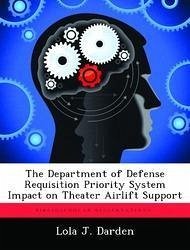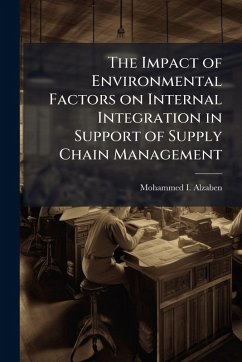
The Department of Defense Requisition Priority System Impact on Theater Airlift Support
Versandkostenfrei!
Versandfertig in über 4 Wochen
14,99 €
inkl. MwSt.

PAYBACK Punkte
7 °P sammeln!
The Persian Gulf War provides one of the most recent, comprehensive examples of cooperative efforts between the U.S. Air Force and U.S. Army to move critical repair parts between theaters of operation. This paper asserts that systemic priority abuse by customer units contributed substantially to the materiel backlogs at the primary aerial ports of embarkation, caused misallocation of critical airlift assets, and needlessly delayed repair parts shipments to supported customers. The study includes a brief overview of current requisition priority and transportation procedures; provides evidence o...
The Persian Gulf War provides one of the most recent, comprehensive examples of cooperative efforts between the U.S. Air Force and U.S. Army to move critical repair parts between theaters of operation. This paper asserts that systemic priority abuse by customer units contributed substantially to the materiel backlogs at the primary aerial ports of embarkation, caused misallocation of critical airlift assets, and needlessly delayed repair parts shipments to supported customers. The study includes a brief overview of current requisition priority and transportation procedures; provides evidence of priority abuse during the Persian Gulf War; identifies and describes the primary reasons for priority abuse; assesses the impace of priority abuse on theater airlift and efforts to mitigate the problem; and examines current and emerging technologies for potential solutions. The study concludes that priority abuse resulted from a number of interrelated factors including lack of in-transit visbility, inadequate automation/communication architecture, and shortfalls in command supply discipline. The study recommends improved communications architecture to supplement fielding of the Global Control Network and the use of parameter controls. This work has been selected by scholars as being culturally important, and is part of the knowledge base of civilization as we know it. This work was reproduced from the original artifact, and remains as true to the original work as possible. Therefore, you will see the original copyright references, library stamps (as most of these works have been housed in our most important libraries around the world), and other notations in the work. This work is in the public domain in the United States of America, and possibly other nations. Within the United States, you may freely copy and distribute this work, as no entity (individual or corporate) has a copyright on the body of the work. As a reproduction of a historical artifact, this work may contain missing or blurred pages, poor pictures, errant marks, etc. Scholars believe, and we concur, that this work is important enough to be preserved, reproduced, and made generally available to the public. We appreciate your support of the preservation process, and thank you for being an important part of keeping this knowledge alive and relevant.












